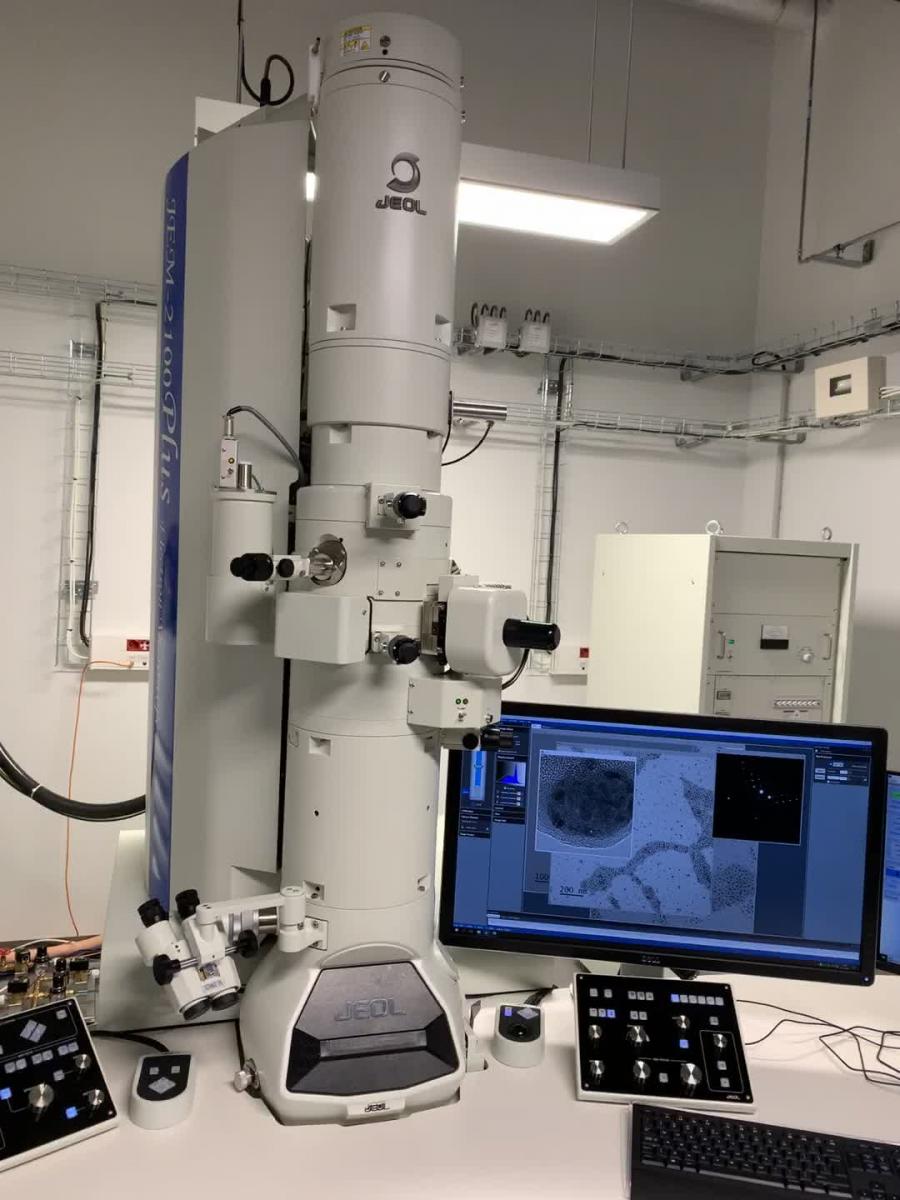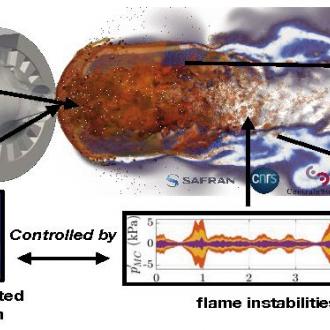 The Soil, Structure and Material Mechanics Laboratory (MSSMAT) inaugurated its new transmission electron microscope (TEM*) on 27 January 2020 as part of the ATOMA project (Analyses and observations: from the micrometre to the angstrom). It is a microscope that works in conventional TEM mode and in STEM (Scanning Transmission Electron Microscope**) scanning mode.
The Soil, Structure and Material Mechanics Laboratory (MSSMAT) inaugurated its new transmission electron microscope (TEM*) on 27 January 2020 as part of the ATOMA project (Analyses and observations: from the micrometre to the angstrom). It is a microscope that works in conventional TEM mode and in STEM (Scanning Transmission Electron Microscope**) scanning mode.
It has different object holders. It is equipped with a low-light CMOS camera and an in-situ acquisition system. It is also equipped with an EDS analysis system allowing acquisition in point, line or cartography modes.
This microscope allows the characterization of all types of solid and dry samples, suitably prepared... (metallic, geological, chemical, pharmaceutical, biological, massive or particulate, etc.).
It is a microscope intended for more everyday and conventional uses. Its commissioning in November 2019 completes the existing microscopy offer at the MSSMat laboratory: "TITAN", a very high resolution transmission electron microscope (TEM), and "HELIOS", a scanning electron microscope, equipped with a focused ion probe (SEM/FIB). This first-rate equipment is part of the EQUIPEX MATMECA and is complementary to this new microscope, allowing CentraleSupélec and community researchers to work on the challenges posed by the behaviour of materials and structures.
* Transmission Electron Microscopy (TEM) is a microscopy technique where an electron beam is "transmitted" through a very thin sample. The interaction effects between the electrons and the sample give rise to an image with a resolution of up to 0.08 nanometres (or even 0.04 nm1,2). The images obtained are generally not explicit and must be interpreted with the help of theoretical support. The main interest of this microscope is to be able to combine this high resolution with information from Fourier space, i.e. diffraction. It is also possible to study the chemical composition of the sample by studying the X-radiation caused by the electron beam.
** Scanning STEM is a type of electron microscope whose operating principle combines aspects of both the scanning and transmission electron microscopes. An electron source focuses an electron beam that passes through the sample. A system of magnetic lenses allows this beam to scan the surface of the sample to be analyzed.
Context of the operation :
In 2017, the ATOMA project (Analyses and observations: from the micrometer to the angstrom), concerning the purchase of a Transmission Electron Microscope, was initiated to renew two ageing pieces of equipment, one based in the MSSMat laboratory (UMR CNRS 8579) and one in the ICMMO laboratory (UMR CNRS 8182). Preparatory meetings with interlocutors/users likely to be interested in the use of a 200 kV LaB6 MET have allowed to converge towards the purchase of an equipment pooling the needs of 7 entities belonging to different components of Paris-Saclay University: ICMMO, LCP, ISMO, IAS, OSUPS, but also CentraleSupélec and ENS Paris-Saclay.
The investment for the acquisition of the microscope was made possible with the help of the Ile-de-France region, the University of Paris-sud, LABEX CHARMMAT, LaSIPS, and CNRS.




